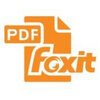Test Lead
100+ Test Lead Interview Questions and Answers

Asked in Concentrix Catalyst

Q. 9. What are the guidelines for WCAG? What is POUR?
WCAG guidelines provide standards for web accessibility. POUR stands for Perceivable, Operable, Understandable, and Robust.
WCAG stands for Web Content Accessibility Guidelines.
WCAG provides guidelines for making web content accessible to people with disabilities.
POUR is an acronym that represents the four principles of accessibility: Perceivable, Operable, Understandable, and Robust.
Perceivable means that the information and user interface components must be presented in a wa...read more
Asked in TECHTEZ

Q. What is the difference between functional testing and non-functional testing?
Functional testing verifies specific functionalities of a system, while non-functional testing assesses performance and usability aspects.
Functional testing focuses on what the system does, e.g., verifying login functionality.
Non-functional testing evaluates how the system performs, e.g., load testing to check response times under heavy traffic.
Functional testing includes unit testing, integration testing, and system testing.
Non-functional testing encompasses performance test...read more

Asked in Wipro

Q. What criteria do you use to choose an automation framework?
Criteria for choosing an automation framework include compatibility with technology stack, ease of use, scalability, community support, and cost.
Compatibility with technology stack
Ease of use for team members
Scalability for future needs
Community support for troubleshooting and updates
Cost of implementation and maintenance

Asked in INDIUM

Q. Explain how you track project metrics.
Project metrics are tracked using tools like Jira and Excel, focusing on key performance indicators such as test coverage, defect density, and test execution progress.
Utilize tools like Jira and Excel to track project metrics
Focus on key performance indicators such as test coverage, defect density, and test execution progress
Regularly update and analyze the metrics to identify trends and areas for improvement

Asked in Wipro

Q. How do you run a test case with multiple data sets?
Testcases with multiple data can be run using data-driven testing approach.
Create a test script that can accept multiple sets of data
Store the data in an external file or database
Iterate through the data and execute the test script for each set of data
Use a testing framework that supports data-driven testing, such as JUnit or TestNG

Asked in Tech Mahindra

Q. Write a Java program to pick the characters at odd positions of a word and display them in ascending order.
This Java program extracts characters from odd positions in a word and displays them in ascending order if their count is odd.
1. Define a method to extract characters from odd indices (1, 3, 5, ...).
2. Store these characters in a list or array.
3. Count the occurrences of each character.
4. If the count is odd, add it to a result list.
5. Sort the result list in ascending order.
6. Print the final sorted list.
Test Lead Jobs




Asked in Concentrix Catalyst

Q. Do you know OOP concepts in programming languages? Explain.
Yes, OOPS stands for Object-Oriented Programming. It is a programming paradigm that uses objects to represent and manipulate data.
OOPS is a programming paradigm that focuses on objects and their interactions.
It allows for the creation of reusable code through the use of classes and objects.
Encapsulation, inheritance, and polymorphism are key concepts in OOPS.
Example: In Java, classes and objects are used to represent real-world entities. For instance, a 'Car' class can have p...read more

Asked in LTIMindtree

Q. Role controls visibility of data access Profiles controls the access to objects fields etc.
Profiles control access to objects and fields, while roles control visibility of data access.
Profiles determine which objects and fields a user can access.
Roles determine which records a user can view or edit based on their job function.
Profiles and roles work together to control overall access to data in Salesforce.
Profiles can be assigned to multiple users, while roles are assigned to individual users.
Profiles and roles can be customized to meet the specific needs of an org...read more
Share interview questions and help millions of jobseekers 🌟


Asked in TCS

Q. How do you run test cases in parallel?
Testcases can be run in parallel by using tools like Selenium Grid, TestNG, JUnit, or by writing custom code.
Use Selenium Grid to distribute tests across multiple machines
Use TestNG or JUnit to run tests in parallel within a single machine
Write custom code to execute tests in parallel using threads or processes
Ensure that the tests are independent and do not interfere with each other

Asked in Wipro

Q. How does Cucumber work? Please explain in detail.
Cucumber is a BDD tool that allows writing test cases in plain English and automating them.
Cucumber uses Gherkin syntax to write test cases in plain English
It maps the plain English statements to code using step definitions
Cucumber supports multiple programming languages like Java, Ruby, etc.
It integrates with various testing frameworks like JUnit, TestNG, etc.
Cucumber generates reports in various formats like HTML, JSON, etc.

Asked in Tech Mahindra

Q. How do you write XPath in Selenium?
XPath in Selenium is used to locate elements on a web page using XML path expression.
Use // to select nodes in the document from the current node that match the selection no matter where they are
Use / to select nodes in the document from the root node that match the selection
Use @ to select attributes
Use text() to select the text of the element
Examples: //input[@id='username'] to locate an input element with id 'username'

Asked in IBM

Q. Where have you used polymorphism in the framework?
Polymorphism is used in framework to achieve flexibility and reusability by allowing objects to be treated as instances of their parent class.
Polymorphism is used in framework to create a common interface for different classes that implement the same method.
It allows different classes to be treated as instances of a common superclass, enabling flexibility in the framework design.
For example, in a test automation framework, polymorphism can be used to create a base class for d...read more

Asked in Wunderman Thompson Commerce

Q. Difference cookies and Cache. Agile Methodologies and ceremonies.
Cookies and cache are both used to store data, but cookies are stored on the client side while cache is stored on the server side. Agile methodologies are a set of principles and ceremonies used in software development.
Cookies are small text files that are stored on the client's computer by a website. They are used to remember user preferences and login information.
Cache is a temporary storage area on the server that stores frequently accessed data to reduce server load and i...read more

Asked in EVRY India

Q. Explain requirement gathering in performance testing.
Requirement gathering in performance testing involves identifying the performance goals and objectives of the system under test.
Identify the performance goals and objectives of the system under test
Understand the user load and usage patterns
Determine the response time and throughput requirements
Identify the hardware and software configurations
Define the test environment and data requirements
Collaborate with stakeholders to gather requirements
Document the requirements for futu...read more

Asked in Foxit

Q. What is the difference between sanity testing and smoke testing?
Sanity testing is a narrow and deep testing approach to check the core functionality of the application. Smoke testing is a wide and shallow testing approach to check the basic functionality of the application.
Sanity testing is performed after the build is received and before regression testing.
Smoke testing is performed after the build is received and before sanity testing.
Sanity testing is focused on testing specific functionality or modules.
Smoke testing is focused on test...read more

Asked in CGI Group

Q. How do you create a framework from scratch?
Creating a framework from scratch involves identifying the requirements, selecting the appropriate tools and technologies, designing the framework architecture, and implementing the framework components.
Identify the requirements for the framework
Select the appropriate tools and technologies
Design the framework architecture
Implement the framework components
Test and validate the framework
Document the framework for future use

Asked in Briskon

Q. What are the automation tools used for testing?
Automation tools streamline testing processes, enhance efficiency, and improve accuracy in software development.
Selenium: Widely used for web application testing, supports multiple browsers and programming languages.
JUnit: A popular framework for unit testing in Java applications, facilitating test-driven development.
TestNG: An advanced testing framework inspired by JUnit, offering more powerful features like parallel test execution.
Appium: An open-source tool for automating ...read more

Asked in Briskon

Q. What are the steps to create a test plan?
Creating a test plan involves defining objectives, scope, resources, schedule, and deliverables for effective testing.
Define the test objectives: Clearly state what you aim to achieve with the testing process, e.g., ensuring software meets requirements.
Identify the scope of testing: Determine what will be tested and what will not, e.g., testing only the user interface and not the backend.
Outline resources required: List the team members, tools, and environments needed for tes...read more

Asked in Wipro

Q. How do you work with Apache POI?
Apache POI is a Java library for working with Microsoft Office documents.
Use POI to read, write, and manipulate Excel, Word, and PowerPoint files
Create a workbook object to work with Excel files
Use the HSSF (Horrible Spreadsheet Format) package for working with Excel files in .xls format
Use the XSSF (XML Spreadsheet Format) package for working with Excel files in .xlsx format
Use the HWPF (Horrible Word Processor Format) package for working with Word files in .doc format
Use th...read more
Asked in Hero Software

Q. Given a test scenario, write the BDD file for it.
Creating a BDD file involves defining scenarios using Given, When, Then format for clear test cases.
Use 'Given' to set up the initial context, e.g., 'Given the user is on the login page'.
Use 'When' to describe the action taken, e.g., 'When the user enters valid credentials and clicks login'.
Use 'Then' to specify the expected outcome, e.g., 'Then the user should be redirected to the dashboard'.
Ensure scenarios are clear and concise for better understanding and collaboration.
Gr...read more

Asked in CGI Group

Q. How have you used OOPS concepts in your automation?
I applied OOP principles to enhance code reusability, maintainability, and scalability in my automation framework.
Encapsulation: I created classes to encapsulate related functionalities, such as 'Login' and 'Search', which improved code organization.
Inheritance: I used inheritance to create a base class 'TestBase' that contains common setup and teardown methods for all tests.
Polymorphism: I implemented polymorphism by defining a common interface for different browser drivers,...read more

Asked in Infosys

Q. What are exceptions in Selenium?
Exceptions in Selenium are errors that occur during test execution.
Exceptions can be caused by various factors such as incorrect syntax, invalid input, or unexpected behavior.
Common exceptions in Selenium include NoSuchElementException, TimeoutException, and StaleElementReferenceException.
Handling exceptions is important for maintaining test stability and reliability.
Try-catch blocks can be used to handle exceptions and provide alternative actions or error messages.
Logging an...read more

Asked in QualiZeal

Q. How will you create a test plan?
A test plan is created by defining objectives, scope, resources, schedule, and approach for testing.
Define objectives and scope of testing
Identify resources needed for testing
Establish a schedule for testing activities
Outline the approach and methodologies for testing
Include risk assessment and mitigation strategies
Document test scenarios, test cases, and test data
Define roles and responsibilities of team members

Asked in Accenture

Q. What challenges have you faced during automation?
Yes, challenges faced during automation are common.
Identifying the right test cases for automation
Maintaining the automation scripts as the application evolves
Handling dynamic elements on the UI
Dealing with flaky tests
Integrating automation with CI/CD pipelines
Ensuring cross-browser compatibility
Managing test data and environment setup
Balancing between manual and automated testing

Asked in Bharti Airtel

Q. Anargram using map, Shif upper and lower program in java
Java program to check if two strings are anagrams using map and shift upper and lower case
Create a map to store the frequency of characters in the first string
Iterate through the second string and decrement the frequency of each character in the map
If any frequency becomes negative, return false
Check if all frequencies in the map are zero
Use shift operator to convert upper case to lower case or vice versa
Compare the two strings after converting them to lower case or upper cas...read more

Asked in UKG

Q. What are the basic manual and automation techniques related to dynamic XPath?
Dynamic XPath is crucial for locating elements that change frequently in web applications, enhancing both manual and automated testing.
Dynamic XPath adapts to changing attributes, such as IDs or classes, making it versatile for locating elements.
Example: Using contains() function: //div[contains(@class, 'dynamic-class')] to find elements with a class that includes 'dynamic-class'.
Utilizing starts-with() function: //input[starts-with(@id, 'user')] to select input fields with I...read more

Asked in Tech Mahindra

Q. How do you analyze test requirements?
Test requirements should be analyzed by the test lead or a team of testers.
The test lead should review the project requirements and identify the testing needs.
The test lead should collaborate with the development team to ensure that the requirements are testable.
The test lead should prioritize the testing requirements based on risk and impact.
The test lead should document the testing requirements and communicate them to the testing team.
The testing team should review and prov...read more

Asked in Infosys

Q. What are the different types of Selenium waits and their uses?
Selenium wait is used to synchronize the test execution with the application's response.
Implicit Wait: Waits for a certain amount of time before throwing an exception if the element is not found.
Explicit Wait: Waits for a certain condition to occur before proceeding further in the code.
Fluent Wait: Waits for a certain condition to occur with a defined polling interval and timeout period.
Thread.sleep(): Halts the execution of the test for a specified amount of time.
WebDriverWa...read more

Asked in Wipro

Q. Write a program to reverse a number.
Program to reverse a number
Convert the number to a string
Reverse the string
Convert the reversed string back to a number

Asked in Embitel Technologies

Q. How would you design a test environment for an integration test scenario?
Design a test environment for integration test scenario
Identify the components/modules to be integrated
Set up a dedicated integration testing server
Ensure the test environment mirrors the production environment
Use virtualization tools like Docker for easy setup and teardown
Implement continuous integration for automated testing
Monitor and analyze test results for improvements
Interview Questions of Similar Designations
Interview Experiences of Popular Companies





Top Interview Questions for Test Lead Related Skills



Reviews
Interviews
Salaries
Users

















